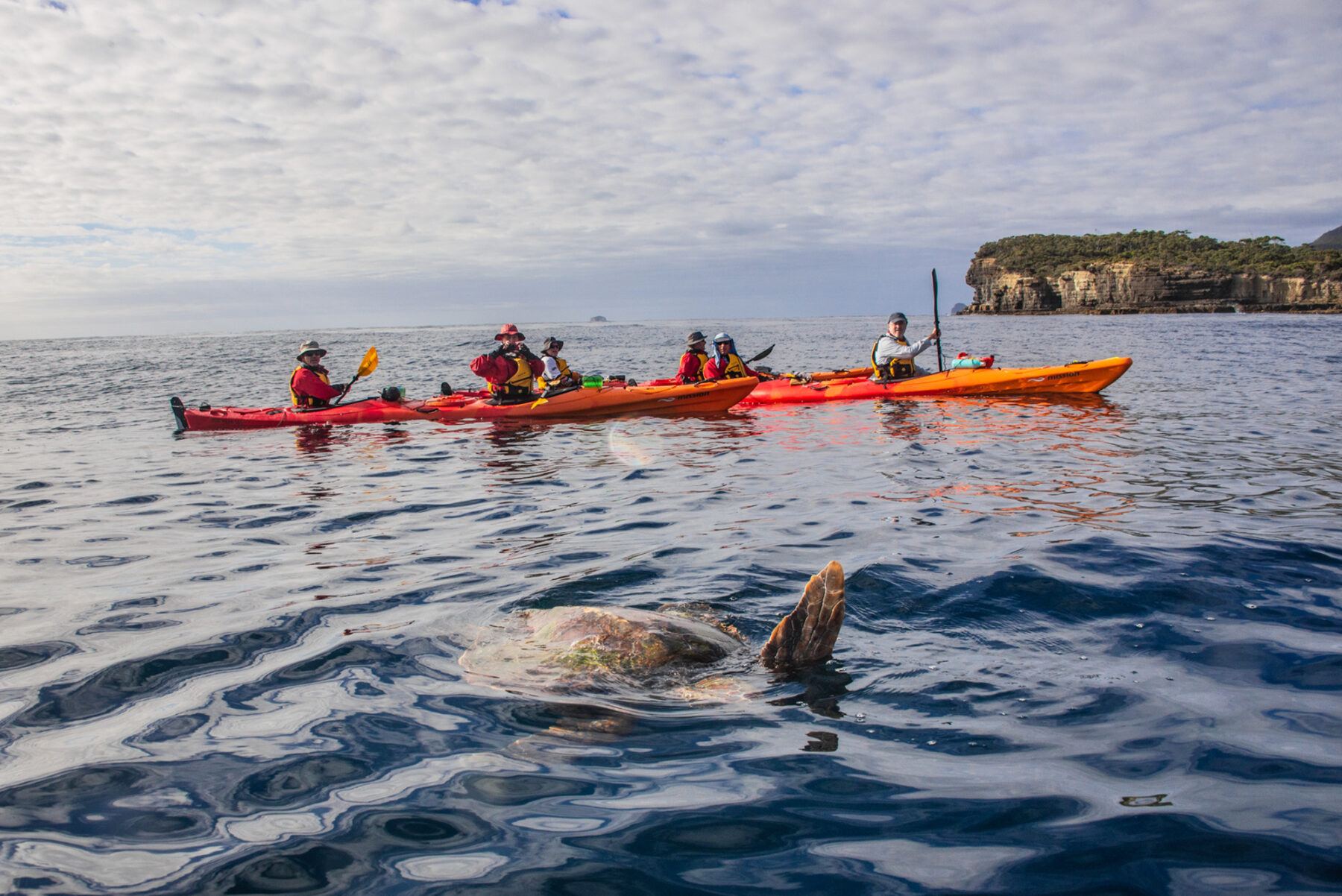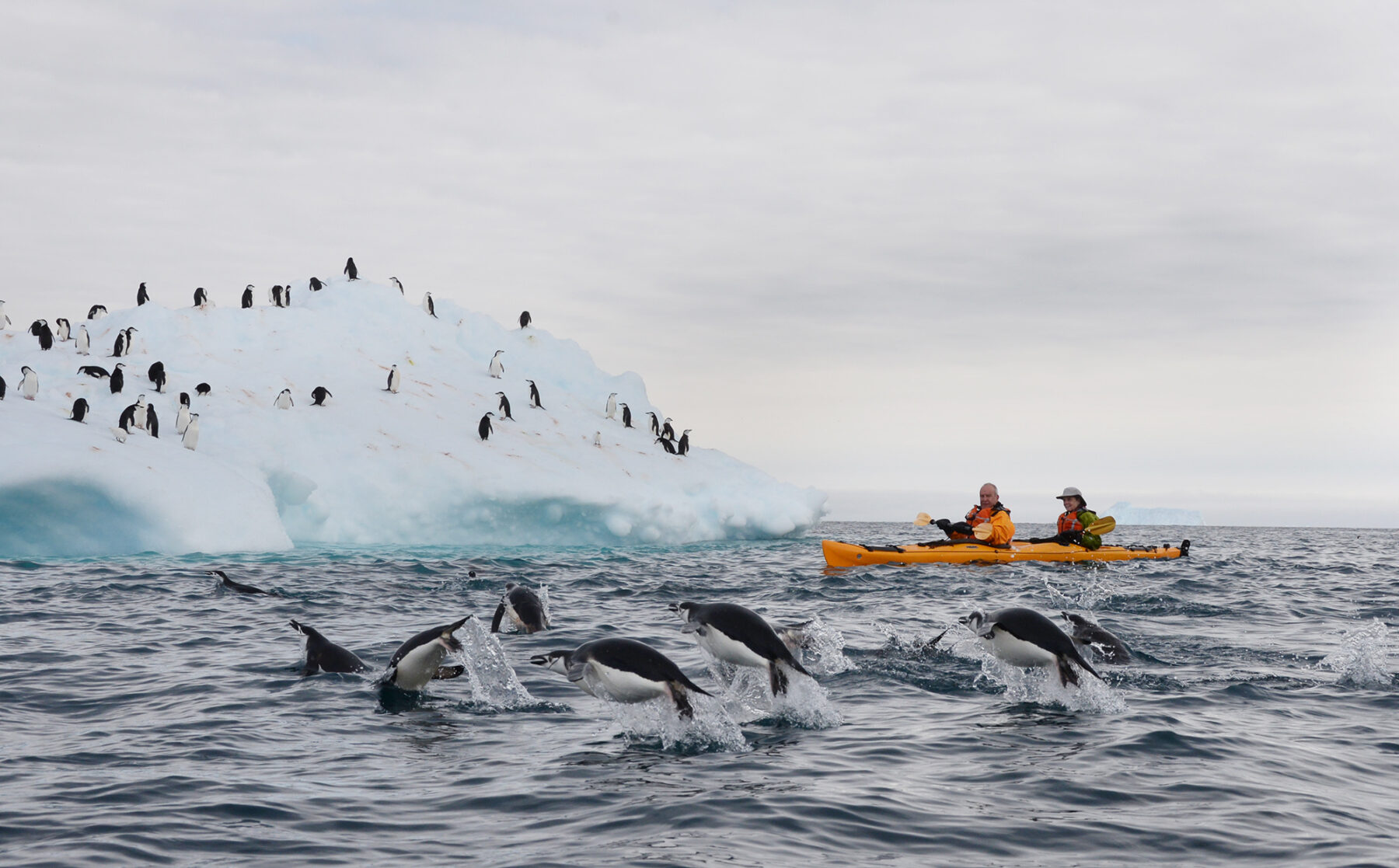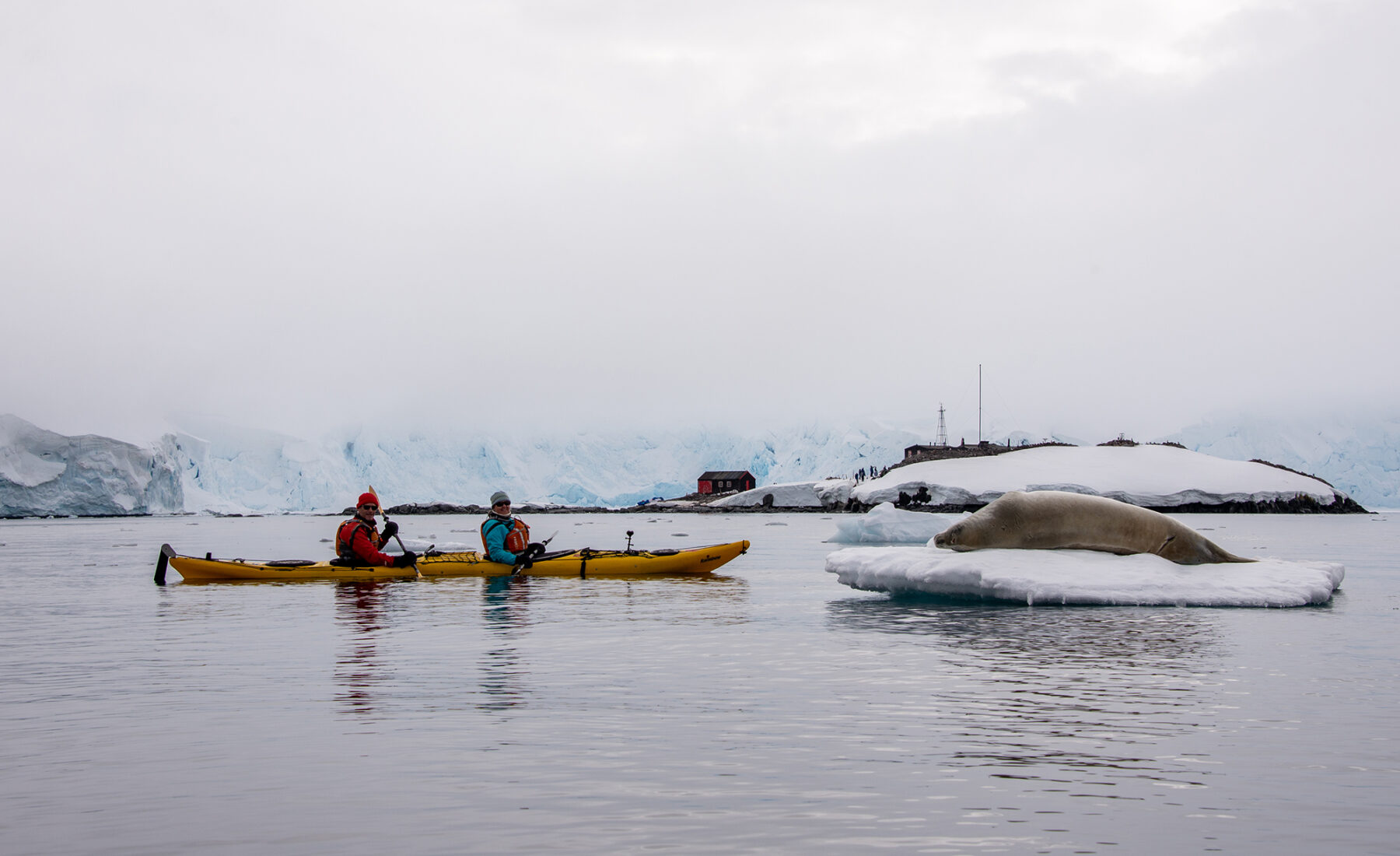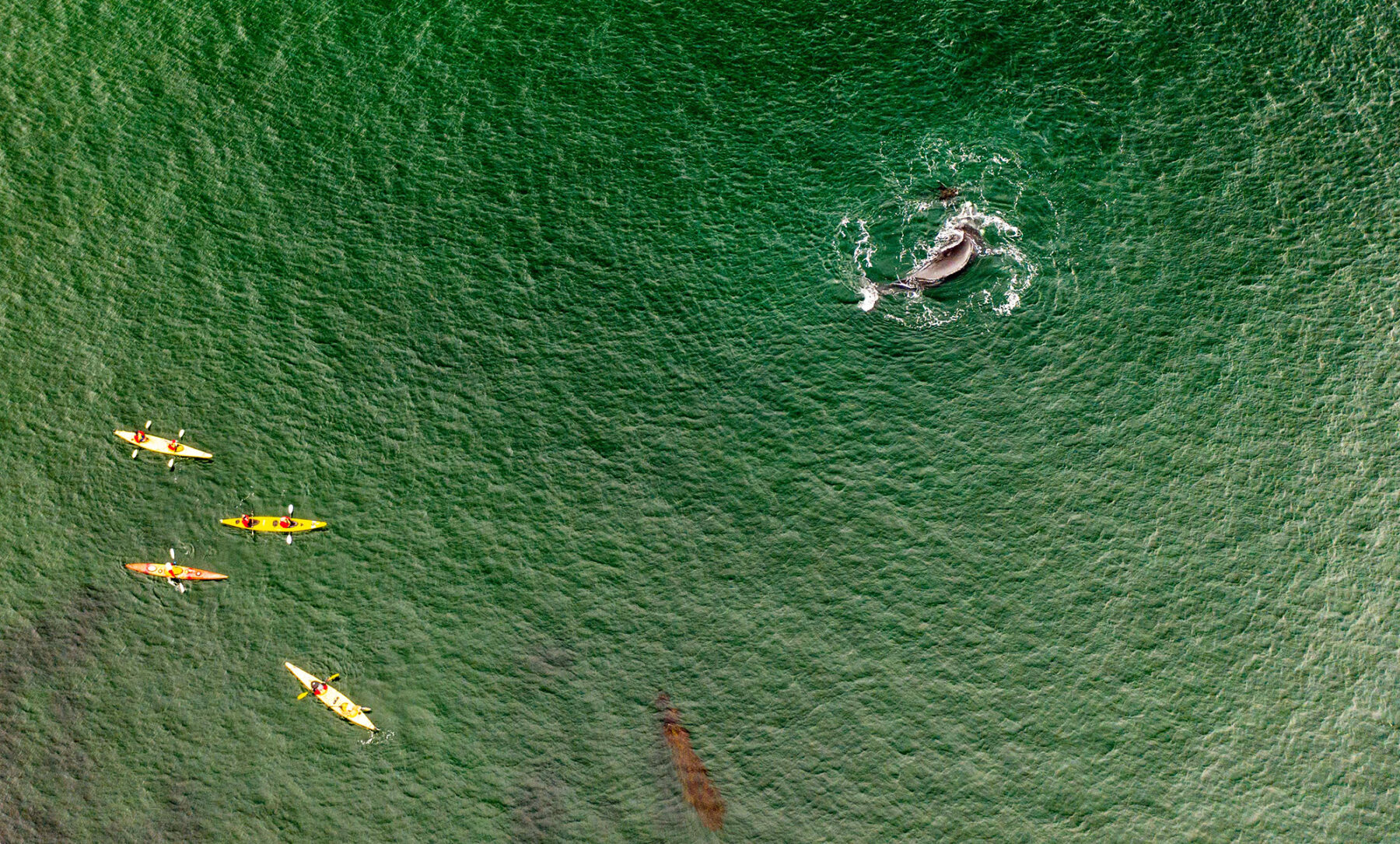Paddle Pulse: Sea kayaking and wildlife encounters

It’s hard to describe the mood or sensation that comes over a group of kayakers when we experience a wildlife encounter on one of our expeditions. While putting ourselves on the water and kayaking in these wild places obviously increases our chances of these encounters, they are still by nature unpredictable, and that serendipity never fails to delight – even for me after decades of paddling all over the world. There are usually a few whoops or gasps in the group, before the moment takes over and a quiet awe descends as we become spectators and guests in this beautiful, wild moment.
It might be the sight of a whale’s back breaking through icy Antarctic waters, the deep whoosh as it exhales, and knowing glance from a single eyeball before it disappears again into the deep. Or cheeky penguins sliding off ice floes, diving and playing around the bow of your kayak. On the other side of the globe, there’s the indescribable power and presence that emanates from a majestic polar bear, even (and always!) when spotted over a safe and responsible distance.
And you don’t have to travel to the polar regions to have amazing wildlife experiences like these. In March 2023, we had a lucky group on our Three Capes Paddle in Tasmania encounter a rare loggerhead turtle, who even popped up to wave hello! And of course playful pods of dolphins surfing and diving around you is a paddling experience that stays with you forever.

However, with the privilege of entering the domain of these wild creatures comes the responsibility of doing so with a light touch. Australia has national guidelines when it comes to approaching whales and dolphins on the water, for example, and these include not touching or feeding them, approaching from parallel and slightly to the rear and moving away from the encounter at a slow and steady pace. In addition to adhering to these and other relevant local regulations, our approach to wildlife encounters is informed by decades of experience guiding paddlers all over the world.
Drawing on those, here are some of our top tips to ensure your wildlife encounter while sea kayaking is safe, responsible and magical.
1. Understand and respect boundaries
Every animal has a comfort zone, and it’s our duty to respect it. Before you head out, familiarise yourself with (and adhere to) local wildlife viewing guidelines for the animals you are likely to encounter wherever you are paddling.
2. Move slowly and predictably

Approach wildlife areas with minimal noise and sudden movements. Use slow, smooth strokes if you’re close to animals and avoid enclosing or cornering them. Animals should always have a clear escape route.
2. The art of passive observation
Resist the urge to interact. Feeding, touching or eliciting a reaction from wildlife can be harmful and is often illegal. The best encounters are passive, where animals choose to approach on their terms or are undisturbed by our presence.
4. Be an informed observer
Learn about the behaviours and signs of distress for the wildlife you might encounter. Agitation in birds, for example, can often be seen through their body language, indicating it’s time to back away.

5. Limit your time
Even when animals appear undisturbed, limit your observation time. Prolonged human presence can stress wildlife, even if there are no immediate signs.
6. Capture memories respectfully
Photographing wildlife is a wonderful way to preserve memories, but always do so responsibly when you’re kayaking. Ideally use zoom lenses to keep a respectful distance and never use flash, which can startle or disorient animals. (Check out more kayak photography tips here.)
7. Safety in numbers
When paddling as a group, stay close together. A cluster of kayaks is less intimidating than a spread-out group, which can be perceived as a threat by some animals.

8. Leave no trace
Keep the habitats you visit pristine by taking all your rubbish with you, avoiding the disruption of vegetation, and ensuring nothing is left behind that could harm the wildlife – so you and future paddlers can enjoy these incredible moments for generations to come!
Toby Story is Senior Guide and Director at Southern Sea Ventures, which offers guided kayaking adventures across the world, from the polar regions to the tropics.





